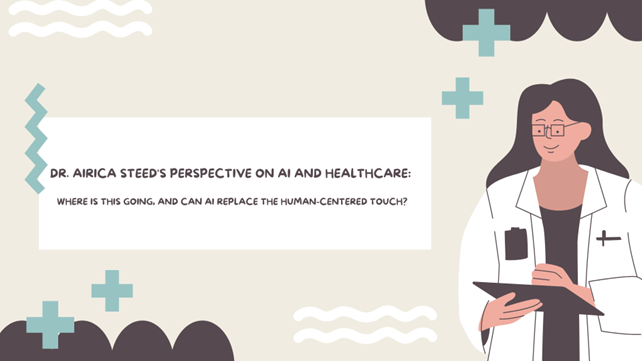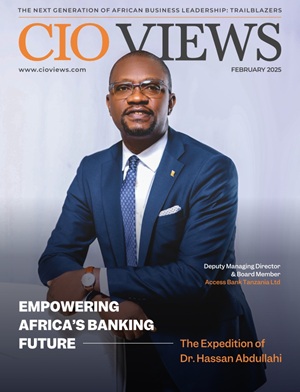
The healthcare workforce shortage is a fairly well-known challenge facing the United States, and awareness of this issue has increased in the wake of the COVID-19 pandemic. Dr. Airica Steed shares some insights on how embracing technology, innovation, and new care delivery models can help the medical field close the gaps created by workforce shortages.
Understanding the severity of the healthcare workforce shortage
The most commonly discussed shortages outside the field relate to nurses. According to the Bureau of Labor Statistics, around 4 million nursing professionals were working in 2022, reflecting an increase of 3% over 2018 figures. There has been robust growth in nurse midwives and practitioners, and while these increases are helpful, they still need to fill the gap in nursing shortages. The BLS reported that 102 million people in America live in a Health Professional Shortage Area (HPSA), and almost half the people in the nation live in a mental health HPSA.
The issue needs to improve across most clinical disciplines. A report from Mercer indicates that, by 2028, the United States will experience a shortage of healthcare workers of around 100,000 professionals, with deficits hitting states like New York, Tennessee, Florida, and Georgia hardest. Primary care areas such as family medicine, pediatrics, and OB-GYN will be hit hard in some states, including California, Virginia, Ohio, the Carolinas, and Georgia.
Clinical organizations and the healthcare field, in general, must take action now to reduce workforce shortages’ impact on future patient care.
Innovations in healthcare
Current innovations in health care are already helping reduce the impact of professional shortages, and they can be leveraged for that purpose in the future. A few innovations that are assisting organizations to leverage the resources they have to provide services to patients despite shortages include:
- Telemedicine. Technology that lets patients work with providers without coming into the office reduces administrative health worker needs and helps physicians and others monitor outcomes for more patients. Clinicians can use web-conferencing tools to speak with patients face-to-face to obtain information and provide specific evaluations; wearable health tech and other tools let patients measure and communicate vital signs and other metrics in real time to enhance care related to chronic conditions and different situations.
- Artificial intelligence. AI is used to support healthcare analytics, more efficient diagnostics, faster and more accurate imaging outcomes, and many other healthcare tasks.
- Robotics. Robotics has been part of OR procedures for some time, and this innovative approach is making its way into other areas of hospitals and healthcare clinics to automate tasks and fill the gaps workforce shortages may leave.
The impact of new care-delivery models
How facilities organize and deliver care can help expand the workforce and address the needs of diverse populations.
Team-based care
Collaborative team-based care efforts do three things that help reduce the impact of workforce shortages:
- They ensure the patient is an active participant in care, reducing some of the burden associated with communication and advocacy on healthcare workers.
- They encourage everyone on the team to work to deliver their utmost within the boundaries of their experience and education rather than staying within the limits of a particular silo.
- They spread the burden of care across an entire collaborative team, reducing the potential for burnout and subsequent turnover in any one specialty.
Community health centers
The rise of privately run community health centers and the continued support of public community health centers create affordable, accessible care options while reducing burdens on overextended hospital infrastructures. Community health centers can also provide prevention and patient education programs, which may help patients actively participate in wellness through diet, exercise, and disease management. This can reduce the number of at-need appointments that healthcare workers must handle.
Retail Clinics
Retail clinics offer more affordable care for non-emergency conditions, taking the burden off emergency rooms and urgent care clinics. The design of retail clinics and the types of conditions they are meant to address don’t typically require the kind of staffing seen in hospital environments, which means non-emergency care for issues like sore throats can be offered in locations across the country with fewer staff.
Policy Recommendations
To support innovation adoption and new delivery models, healthcare leaders must implement policy changes. Some recommendations include:
- Increased funding for training. Dr. Airica Steed knows firsthand that the proper education or training makes a difference. However, healthcare degrees and certifications can be expensive, prohibiting individuals who otherwise feel called into this work. When employers, governments, private organizations, and others develop funding opportunities to help cover the cost of education and training, more people may find the path to these jobs more manageable.
- Expanded scope of practice for certain health care professionals. In some cases, healthcare professionals can work across a broader scope, filling in for each other or serving patients in more than a highly specialized way. Cross-training, expanded scope in job descriptions, and awareness of a holistic look at clinical skills can help support this goal.
- Incentives for adopting innovative practices. Further incentivizing innovation in health care can help drive adoption.
The importance of embracing innovation
Dr. Airica Steed urges healthcare leaders and policymakers to embrace innovation and new care delivery models and integrate changes today to build a sustainable healthcare workforce for the future.




















